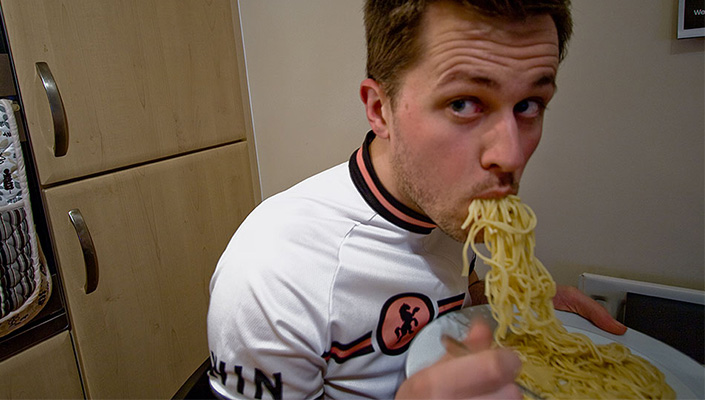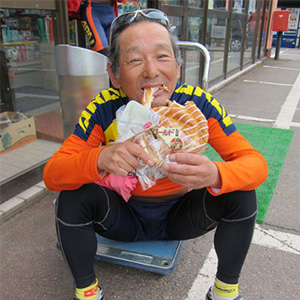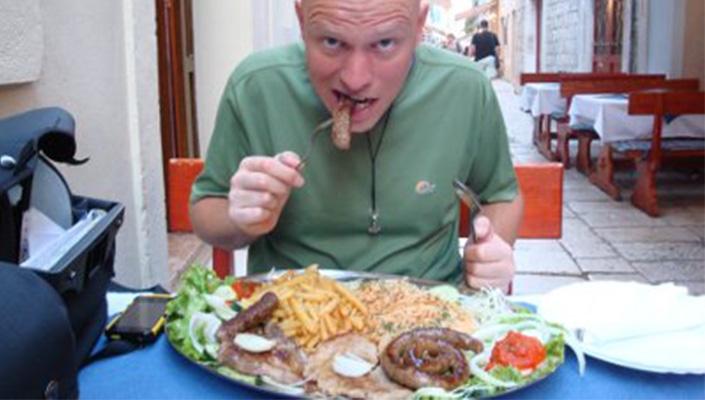
We all know sports and nutrition go hand in hand, and it's no different for cyclists on the open road. When you think of nutrition, you immediately think of what you should eat. But have you ever wondered what you should NOT eat while training?
WHY YOU SHOULD EAT
For exercise sessions exceeding one hour, you will need to consider eating something while you exercise. In this instance you should eat some solid foods as well as easily digested supplements such as gels or the like. If you don't eat for sessions exceeding one hour, your body will begin to run out of fuel - this means your performance drops gradually until you hit rock bottom.
A steady eating plan for extended exercise will help prevent this decline in performance, simply by providing fuel for your body and its energy systems. No food = no energy; no energy = no go! Foods you should consider are usually high in carbohydrates and protein. You don't have to formulate some sort of superfood, just stick to basics such as bananas, sports bars, gels etc. It's impossible to eat the perfect snack especially since most convenient snacks, such as muesli bars, are high in sugar.
WHAT YOU SHOULDN'T EAT

When you exercise, you want to avoid foods and drinks that are very high in sugar. The effect of these sources of energy can be quite extreme offering a very high amount of energy... but only for a short period of time. The 'come-down' from your sugar high will often leave you worse off than you were before; your body struggling to cope with the lack of sugar that moments before was overloading your system.
It's always surprising to take a look in your pantry and see how much sugar your favorite snacks contain. For example: Many riders grab muesli bars and a banana before heading out for a ride. The banana is loaded with fruit sugars, known as fructose. These sugars are good for you as your body will be able to burn fructose for quite some time. Your body turns the fructose into sucrose and glycogen which are both used as fuels in your body.
But those muesli bars you just grabbed are also loaded with a processed sugar called sucrose. This is the same sucrose your body uses from the banana after some internal processing. The difference is; your muesli bar contains far more sucrose than your body needs, or can absorb and process. Try giving up simple sugars, in exchange for more complex fruit sugars.
NOTE: It's not the grain contents of foods such as muesli bars, but more the sugary 'glue' that holds them together that contains the excess amounts of sugar.
There is a catch though; your brain can become addicted to processed sugar. It's a very efficient fuel, meaning a little bit of sugar can have a big effect (not a long effect though). It's easier for your body to use an instant source of energy than to have to process a complex sugar into a simple sugar before using it. Your brain learns this, and it won't hold back in giving you cravings for high sugar foods - especially when exercising. Break the habit, but prepare for some resistance from your brain - it's like quitting smoking for some people.

AIM LOW, RIDE HIGH FOR LONGER
The glycaemic index is a basic way of grasping an understanding on what you should and shouldn't eat - it's a measurement and scoring system that acknowledges the effect a food has on your blood sugar levels. The system is prone to some errors when things get technical but, for the sake of normal dietary needs, it works fine.
Food is rated as Low GI, Medium GI or High GI; you want to aim for low to medium GI foods for riding, and daily life in general.
- Low GI foods (55 score or less) contain whole grains, small seeds and beans - for riding you could aim for eating more fruit or scientifically formulated supplement bars.
- Medium GI foods (56-69 score or less) contain processed wheat, grain, and sucrose. These food groups would be suitable for a small 'controlled' sugar boost if needed. Foods such as jam pikelets are ideal.
- High GI foods (70 and above) are worth avoiding altogether - foods such as bagels, pretzels, processed cereals and white bread.
Next time you're perusing through your pantry, take a look at the sugar content of your riding snacks. Make some comparisons between the foods you regularly eat, and consider whether changes are in order. Last of all, have a look for a GI rating on the packaging of your food. It will make your choices far easier the next time you go food shopping.



